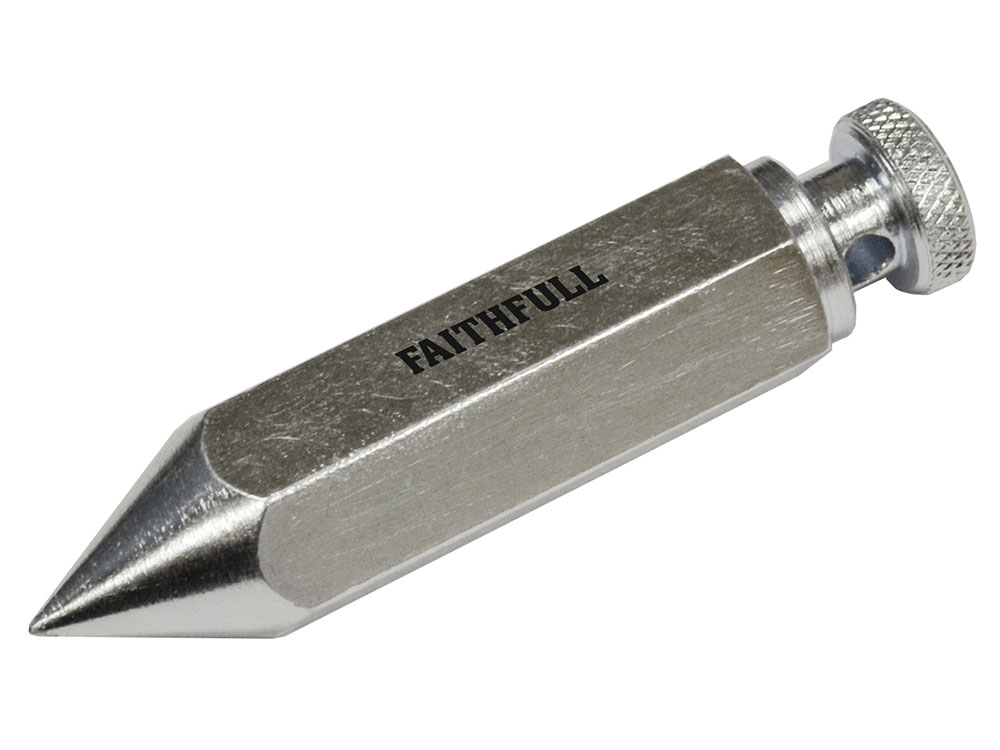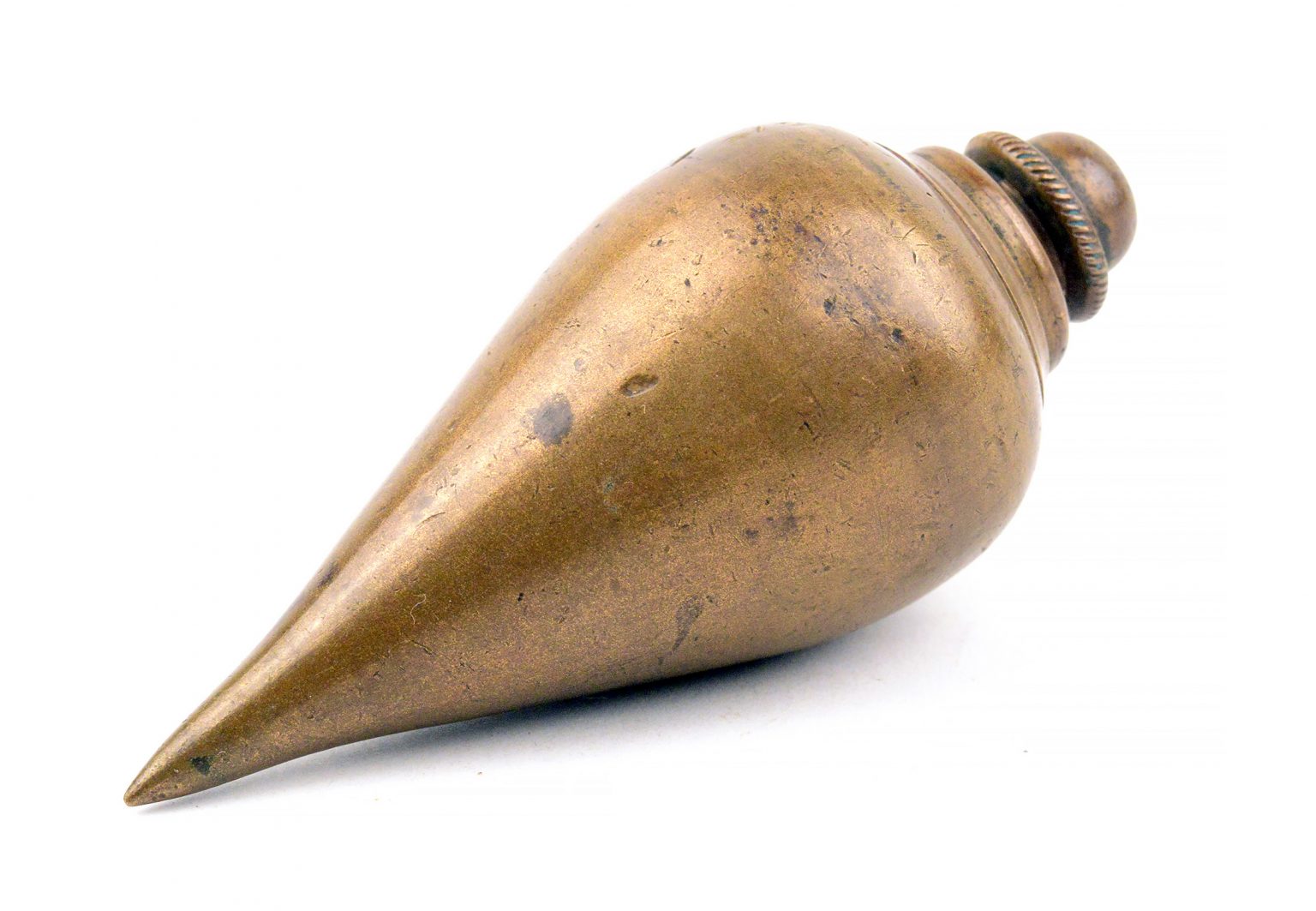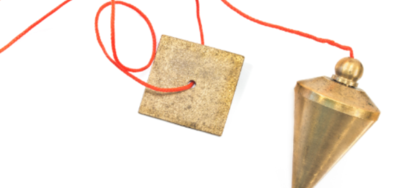

Visually level is exactly what it sounds like. We’re okay with ‘visually level’ and splitting the differenceįinally, when all else fails and no amount of math or careful cutting can make a surface perfectly level, it might be time to settle for visually level.
Plumb bob tricks how to#
See also: How to install filler panels in a kitchen, and why filler panels are so important.

the final result! sources: cabinets | faucet | hardware | sconce Using clamps to scribe surfaces is a handy way to make sure panels align with the cabinet sides they’re intended to conceal. When walls are really out of plumb, filler panels can be scribed or cut intentionally out of square. the renovation of our garden apartment’s kitchen Essentially, a filler panel is a length of finish board that fills in the space where a cabinet doesn’t meet the wall or where cabinets meet each other. Very rarely, if ever, will the wall that a cabinet meets be as perfectly square as the cabinet itself. They’re also integral in filling gaps between cabinets and walls. Installing filler panels eliminates larger unsightly gaps between surfaces. See also: How to get a perfect caulk line + our favorite caulks. Tip: For extra large gaps, try using backer rod! It gives the caulk something to adhere to, rather than emptying a whole tube into the abyss. Once the caulk was dry, everything was painted and the result is what looks like a perfect joint. When we went to install the fillers at the top of the cabinets, we did our best to scribe our cuts, but we filled in the final imperfections with (a whole lot of) caulk. caulking the seams on a bathroom beadboard install the final result! sources: sink | faucets | tile | sconces | medicine cabinetįor example, the ceilings in our laundry room are very much out of level. That’s obviously not the case, but filling joints of varying degrees of imperfection with a smooth bead of paintable caulk is a great, inexpensive way to eliminate the visual distraction of uneven seams and joints. We like to joke that caulk is the glue that holds an old home together! So much so, in fact, that we even wrote a whole post about it. See also: How we cheated our way to a straight ceiling! We caulk (almost) ev-er-y-thing! Below, we used it to mark the level line to install IKEA mounting rails for the Two Flat’s Unit 2 kitchen! Often times, I’ll mark the floor with painter’s tape where I need to keep the laser level. Starting at one point, then shooting a laser beam around a room to ensure consistency is as easy as it looks! Just make sure your laser doesn’t move throughout the process and you’re all set. Perhaps our favorite use though, was creating a level paint line two-thirds of the way up our master bedroom walls: our favorite laser level the final result! sources: curtains | sconce | bedding | vanity Self-leveling laser levels are absolutely indispensable for old homes! We’ve used our favorite Bosch unit for everything from installing kitchen cabinets to hanging artwork and gallery walls. Regardless of your home’s age or how it earned its – ahem – charm, there are countless ways to work around it! These are our favorites. Age, settling of a building, human error and inaccurate measuring tools can all contribute to this type of Old House Charm, as we like to call it. Many factors can contribute to a structure being out of plumb, level or square. This can be checked with a speed square or framing square. In a home, this applies to the meeting point between two perpendicular surfaces such as two walls, or the junction of a wall and a floor. This is also usually verified with a level or a laser level. In a home, this applies to horizontal surfaces like floors or countertops. Level | Having no part higher than another. This can be checked for accuracy with a plumb bob, level or laser level. In a home, this applies to vertical surfaces such as walls, door jambs and cabinet fronts. Our in-progress Two Flat dining room + kitchen But before we jump into how you can work around the fact that your home isn’t perfect, let’s define some terms.


But guess what? Whether you’re hanging a curtain rod, installing kitchen cabinets or replacing a bathroom vanity, these imperfections are generally not that big of a deal if you know how to deal with them. Here’s a (not so?) fun fact: regardless of when your house was built, it’s imperfect! The floors aren’t perfectly level. Today, we’re breaking down some of our favorite tricks on how to make things look straight and level, even when they’re not! fruit bowl | cream toaster | chopping block | faucet We love old houses, but you’d be hard pressed to find a clean 90-degree angle anywhere.


 0 kommentar(er)
0 kommentar(er)
